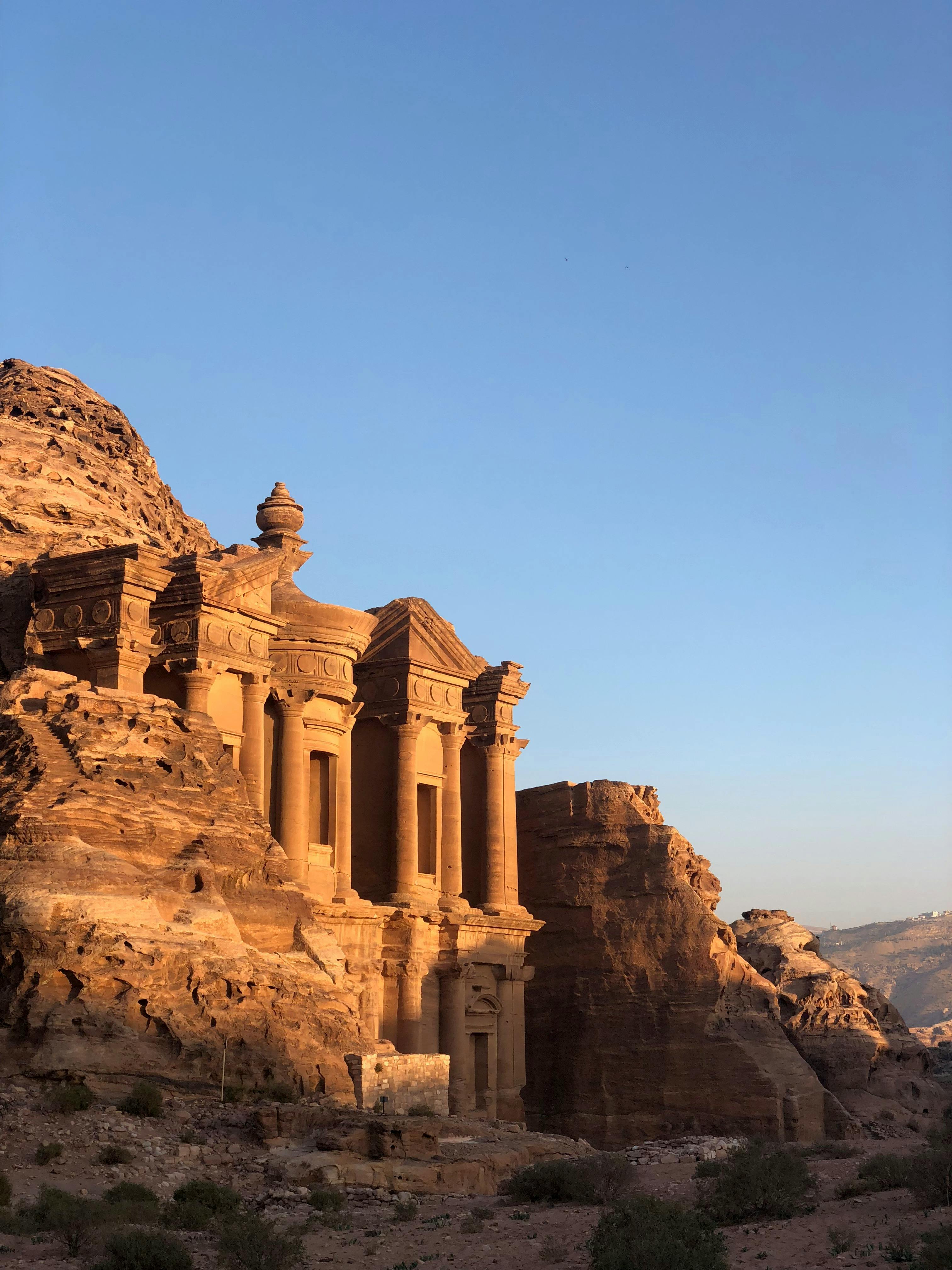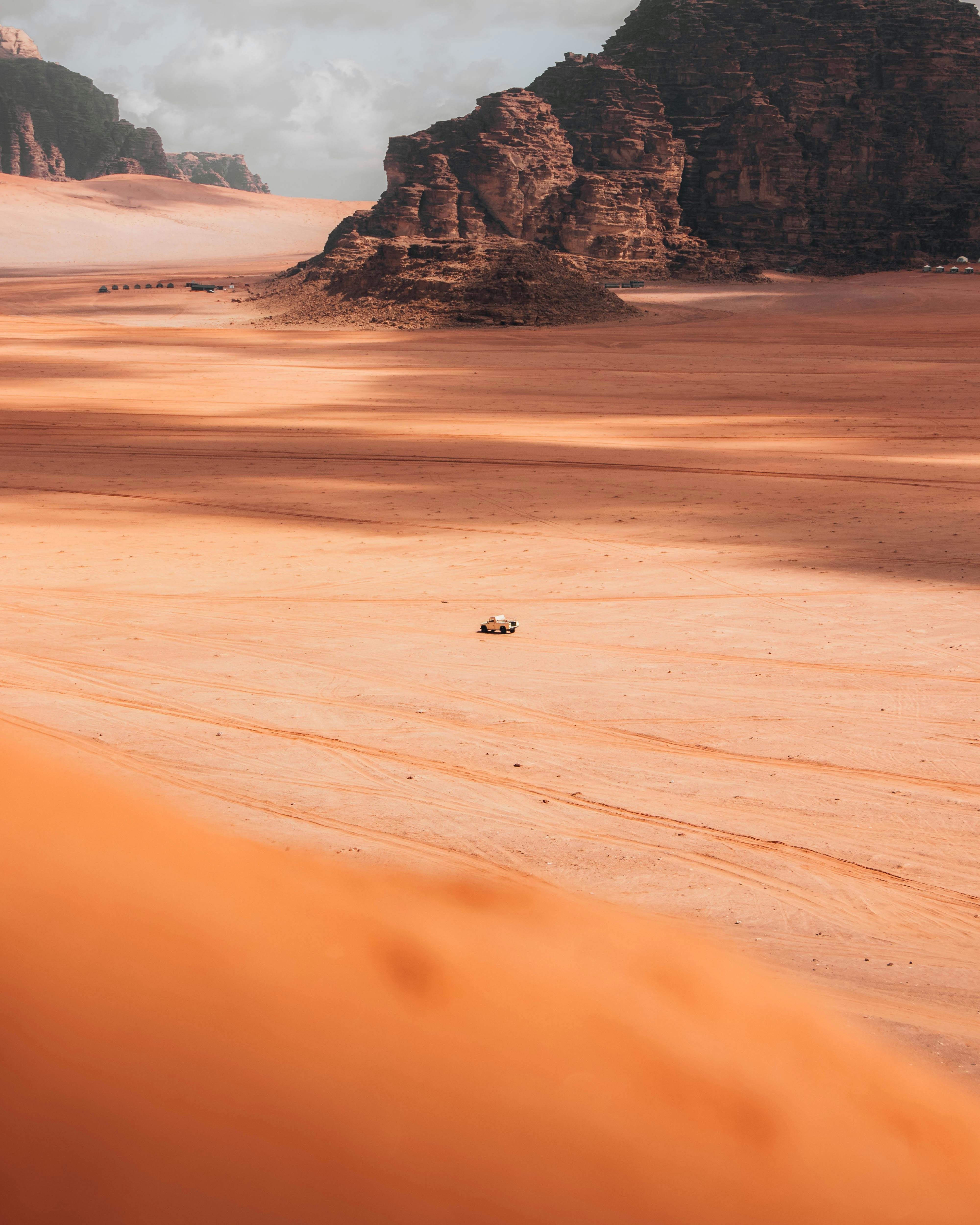Jordan Travel Guide 2025: Insider Itineraries, Local Secrets & Essential Tips
Three years ago, still jet-lagged from a red-eye to Amman, I found myself speechless, staring at the rose-red stones of Petra at sunrise. Let me set the scene—not every country launches new travelers into the deep end quite like Jordan. Whether you’re planning your first big adventure or you’ve already racked up stamps all over the Middle East, Jordan forces you to rethink what you think you know about history, hospitality, and real adventure. I’ll be honest: Back when I was prepping my own Jordan itinerary, I found a lot of blogs repeating the same “top ten” relics. But here’s the thing: there’s real depth here—hidden souks, night markets, Bedouin camps far from the crowds, and real-world lessons on safety, budgeting, and cultural navigation that no algorithm can teach you. This guide pulls together everything I’ve learned: what to plan, where to go, what to budget for, traveler mistakes to avoid, and the insights and surprises Jordan, in all its contrasts, has to offer.
Why Jordan? Travel in 2025 and Beyond
If you’re wondering why now is a uniquely fascinating—and, dare I say, pivotal—moment to visit Jordan, let’s get specific. Post-pandemic trends have seen the country’s tourism surge, with arrivals nearly doubling since 20221. That’s not just a stat—it means real change: more boutique hotels, improved digital nomad visas, but also more crowded Petra trails and a ripple effect into lesser-known areas. For those of us always searching for that “local” angle, 2025 is a sweet spot before overtourism peaks2. Plus, regional stability (yes, check travel advisories!) and new routes via Royal Jordanian and budget carriers make Amman a surprisingly easy gateway—a far cry from when I first visited and Turkish layovers were the norm.
Here’s what stood out for me: Jordan proves that history and innovation are not at odds. Layered on top of biblical ruins and Nabatean tombs, you’ll find eco-tourism collectives, social-impact food tours, and street art that tells stories of resilience. Few places invite you to alternate between hot air ballooning over Wadi Rum at dawn and eating mansaf with Bedouins at dusk—but Jordan does, and it does so with a sincerity I’ve rarely seen.
And yet, it’s not for everyone. Let’s be realistic: Jordan is a destination that rewards planning, flexibility, and a willingness to engage with complexity. The reward? See for yourself.
Key Takeaway
Jordan is experiencing a travel renaissance—visit now to discover local hospitality, hidden gems, and transformative desert experiences before mass tourism changes the dynamic. Smart travelers lean in with curiosity and an adaptive mindset.
Classic Jordan Itinerary: Amman, Petra, Wadi Rum, & the Dead Sea
I make no apologies for starting with “the big four.” Amman, Petra, Wadi Rum, and the Dead Sea are not clichés—they’re cultural heavyweights, and for a reason. But, and this is crucial, it’s the way you thread them together that determines whether you’re just chasing postcards or actually experiencing Jordan. Here’s a classic 7-10 day route (I’ve tried a dozen versions; this is my current favorite):
- Day 1-2: Amman — Ancient Citadel, hipster Rainbow Street, downtown cafés, overnight at a family guesthouse.
- Day 3: Madaba & Mount Nebo — Mosaic marvels, panoramic views; you’ll often have churches to yourself.
- Day 4-5: Petra — Arrive via the winding King’s Highway, stay overnight for sunrise at the Treasury, hike the back trail to avoid crowds.
- Day 6: Wadi Rum — Jeep safari, Bedouin campfire, sleep in a bubble tent if you can swing the upgrade.
- Day 7: Dead Sea — World’s lowest point, salty float, day pass at a spa, or budget beach for the full spectrum.
Don’t let anyone tell you this loop is passé. The magic is in the details—and believe me, I’ve learned, more than once, that “classic” does not mean predictable.
Local Secrets & Off-Path Jordan: Beyond the Guidebooks
If there’s one lesson Jordan taught me early (sometimes painfully), it’s this: Travel guides only scratch the surface. It wasn’t my first time chasing “local” experiences (and failing, honestly—sometimes you overplan and miss the point). But with each return trip, I started to see what real Jordanian hospitality looks like. Even a wander down a side alley in Madaba, ducking into a bakery at sunset, reveals more about the country than a dozen orchestrated tours. So, what actually feels authentically “Jordan”? Here are my personal top picks—and a few hard-won travel mistakes along the way:
- Salt (“As-Salt”): Quiet, pastel-hued hillside town with Ottoman architecture, a progressive food scene, and family-run B&Bs where owners share stories over breakfast.
- Ajloun Forest Reserve: Home to hiking trails that wind through pine forests—no crowds, actual bird calls, and eco-lodges run by the RSCN (Royal Society for the Conservation of Nature4).
- Jerash after hours: Roman ruins rivaling Rome itself; stick around after the tour groups vanish and listen to the wind in the colonnades. Magic.
- Mujib Biosphere Reserve: A canyoning/adventure hotspot that turns you into an adrenaline junkie—just beware: I wasn’t prepared for the current, and my shoes never recovered.
- Aqaba: Coral reefs, Red Sea diving, and, increasingly, indie coffee shops and rooftop sunset bars. No, really—a very different vibe from Amman.
Honestly, I’ve made pretty much every classic traveler mistake here: assuming every “local” tour was truly local (spoiler: vet operators carefully), misjudging distances (Jordan is bigger than you think), and forgetting how fast daylight vanishes in winter (one epic lost hike later, I now check sunset times religiously).
Where to Stay: From Backpacker Hostels to Boutique Heritage Hotels
Accommodation in Jordan has transformed radically since my first visit in 2012—from Soviet-era business hotels to a wave of indie hostels and internationally rated eco-lodges that actually live up to the hype. Let me get real: If you’re used to Southeast Asia price tags and instant boutique everything, Jordan will seem pricey (especially Petra and Wadi Rum). But, you can stretch your dinar:
- In Amman: The Cabin Hostel for backpackers, Beit Al Selah for private rooms with local flair, or the iconic Amman Rotana for panoramic city views but not much “local” feel.
- In Petra: Seven Wonders Bedouin Camp for the social experience, Mövenpick if you need a real bed after endless trekking.
- Wadi Rum: Hasan Zawaideh Camp is as authentic as it gets; for a space-age twist, try a “martian dome.” If you’re chasing Instagram likes, you’ll find plenty—but real magic happens by the evening fire.
- Dead Sea: High-end: Kempinski Ishtar. Budget: Day access to Amman Beach (well-worn, but the salty float is the same).
Pro tip: Guesthouses and eco-lodges booked direct offer deeper discounts, and staff sometimes organize unscripted side trips or home-cooked meals. In my experience, the best conversations (and best food) in Jordan happen over home-cooked mansaf, not at the five-star buffet.
Money-Saving Tip
If you plan to cover Jordan’s main sites, the Jordan Pass is non-negotiable. It bundles visas plus nearly all entry fees. But double-check inclusions—policies shift year to year, and not every site is covered.6
When to Go: Seasons, Weather, and Event Timing
Weather in the Middle East can be brutal—there’s no way around it. This applies tenfold in Jordan: The contrast between baking desert and chilly Amman evenings is real. Here’s what’s actually important, based on hard-won seasonal mistakes (packing the wrong stuff, nearly freezing on desert nights, etc.):
| Season | Temperature Range (°C) | Weather Highlights | Travel Pros/Cons |
|---|---|---|---|
| Spring (March-May) |
12-28 | Wildflowers, mild/pleasant, rare rain | Peak hiking; moderate crowds |
| Summer (June-August) |
18-38 | Hot/dry, desert blazes by day, cool at night | Lowest prices, but heat can be intense |
| Autumn (Sept-Nov) |
14-28 | Warm, sunny, rarely humid | Best desert adventures, festivals abound |
| Winter (Dec-Feb) |
5-15 | Snow in Amman, frosty Petra evenings | No crowds, lower costs, risk of rain |
Local festivals—especially the Jerash Festival (July/August, Roman theatre performances/arts) and Amman International Film Festival—are brilliant, but last-minute tickets can be tough. And Ramadan? It’s beautifully atmospheric, but some sites and restaurants close early; plan meals accordingly.
Weather Wisdom
Expect extreme temperature swings—layer, layer, and pack for cold nights in the desert. Don’t trust only “average temps”—daily highs and lows can be far wider in reality.

Cost, Safety, and Practical Planning: What Travelers Need to Know
Let’s talk money—because real talk, Jordan is not a budget backpacker’s paradise like Egypt or Turkey. My early trips burned through cash fast, mostly from underestimating intercity taxis and splurging on unexpected visa fees. But with smarter, local-style planning, it’s affordable. Here’s an up-to-date, honest breakdown of core costs and what still surprises even seasoned visitors:
| Expense | Shoestring (USD/day) | Mid-Range (USD/day) | Luxury (USD/day) |
|---|---|---|---|
| Accommodation | 18–35 | 60–120 | 180–400+ |
| Meals | 6–14 | 15–35 | 40–70 |
| Transport | 5–15 | 20–55 | 70–120 |
| Site Fees | 3–8 | 10–30 | 40–80 |
For most, an all-in daily average of $60–$110 USD hits the sweet spot. Jordan’s official currency is the Jordanian Dinar (JOD), and it’s strong—factor in exchange rates, since credit card acceptance is solid in Amman, but far patchier elsewhere7.
Safety in Jordan: Realities vs. Perceptions
Jordan is statistically one of the safest regional travel destinations—as repeatedly documented in 8 and 9 —but headlines about neighboring instability linger in Google search history. My advice: review up-to-date embassy advisories (stick to the US, UK, and Canadian sites for reliability); skip the border zones with Syria/Iraq; and ask hotel staff for latest local conditions every morning.
- Solo Female Travelers: Jordan is among the safer Middle Eastern destinations, but conservative dress and polite boundaries (especially in rural or religious towns) are genuinely appreciated. I’ve heard from female travelers who report mostly positive experiences, albeit with the occasional awkward stare or question.
- Health & Water: Tap water is not drinkable except in high-end hotels; filter bottles or sealed water are crucial. Stomach bugs do happen—carry a basic kit.
- Scams/Grift: Honestly, less common than in many European capitals. The more likely issue is inflated “tourist” taxi rates or being rushed at major sites. Politely but firmly negotiate prices before agreeing to anything.
Cultural Etiquette: What to Know Before You Go
I’ll say this upfront: In Jordan, manners still matter. A lot. One major misstep early on—wearing shorts in a conservative neighborhood—taught me it pays to observe, not assume. Some insight, drawn both from my own experience and hard-won advice from local hosts:
- Modest Dress: For everyone (not just women), long pants or skirts and sleeves above the elbow in public are standard. Beachwear is fine at Dead Sea resorts.
- Greetings: Handshakes (right hand only) are the norm. More formal among men; women often nod/smile unless a handshake is clearly initiated.
- Gift-Giving & Hospitality: Refusing tea or coffee is rarely taken at face value—at least take a sip as a sign of respect. Small gifts from your home country are celebrated, even expected, in rural areas.
- Religion: Friday is the main holy day; some sites and shops may close or alter hours. During Ramadan, avoid eating and drinking in public during daylight hours out of courtesy.
- Photography: Always ask permission before photographing people, especially in rural/Bedouin communities or holy sites.
And if you’re ever in doubt? Ask. People are overwhelmingly willing to clarify—and the conversation often leads to spontaneous invitations you would never find in a guidebook. Fumbling the customs is part of the fun (and sometimes, the embarrassment). I’ve been there—trust me.
Sustainable & Responsible Travel in Jordan: Walk the Talk
It’s easy to repeat the word “sustainable” these days (marketing departments love it), but actually seeing it work on the ground? That’s harder. Jordan is at a crossroads: The surge in tourism is bringing income—and real pressure to fragile ecosystems and cultural sites. The reality? The best “green” initiatives here are hyper-local: eco-lodges in protected reserves, Bedouin-run stargazing and hiking tours, and community-based travel collectives determined to put benefits back in the hands of Jordanians12.
- Book through the Royal Society for the Conservation of Nature (RSCN) for Ajloun, Dana, and Feynan—proceeds fund wildlife and reforestation.
- Ask tour operators about waste policy (single-use plastics are a major issue, especially in Wadi Rum and Petra).
- Learn (and follow) official trail routes—off-roading or “shortcutting” damages both land and livelihoods.
- Support female-run crafts, guesthouses, and restaurants—initiatives like Souk el Tayeb and Beit Sitti lead the way.
Looking ahead, Jordan’s next decade depends on how travelers (like us) shape demand: Will we just Instagram Petra, or will we leave the place better than we found it? My own turning point: A simple conversation with a Dana village guide who reminded me, “Enjoy, but give something back.” That’s true everywhere, but especially crucial here.
Action Step
If you take one thing from this guide, let it be this: Slow down, ask questions, travel with intention, and choose partners who put local people and conservation first.
Jordan FAQ: Real Traveler Questions Answered
-
Is Jordan safe for LGBTQ travelers?
While homosexuality is legal and major cities are generally tolerant, open displays of affection are not the cultural norm. Discretion is advised, especially in conservative areas. -
Can you travel Jordan independently or do you need a tour?
Absolutely possible, but public transport is limited outside Amman. Renting a car gives the most flexibility (roads are excellent), but driving styles differ from Europe/North America. Tours can add value for Wadi Rum and eco-reserves. -
Are there COVID-19 restrictions in 2025?
As of summer 2025, all COVID-related border restrictions and mask mandates have been lifted13, but always check official government advisories before you go. -
What are the top food experiences?
Do not miss mansaf (lamb with rice and jameed), kanafeh for dessert, or a proper Arabic coffee session in downtown Amman. If you have dietary restrictions, most places are increasingly accommodating, though English may not always be understood outside bigger cities.
Final Thoughts & Crossroads
My own understanding of Jordan keeps evolving—the more times I return, the more layers appear. There’s the booming digital nomad scene in Amman, the serene, almost meditative early mornings in Wadi Rum, the exhilarating chaos of the Zarqa markets, and meals eaten around mismatched tables with new friends. If this guide helps even one more traveler find those moments—beyond what any Instagram photo can capture—then it’s done its job. So, what’s holding you back? Jordan isn’t just a destination; it’s an invitation to a different way of traveling. Take it.



